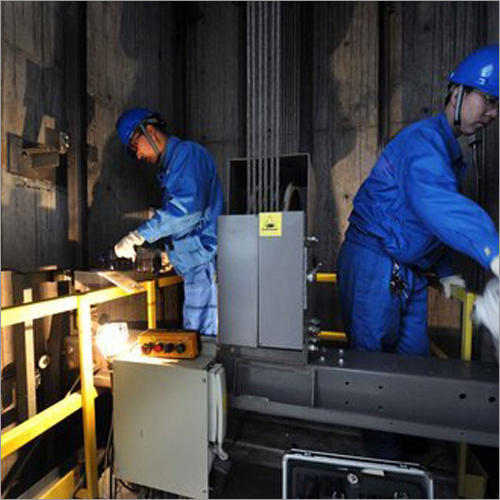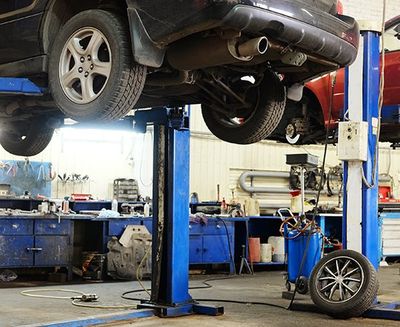Find Specialist Lift Maintenance Services: Finest Lift Repair Companies Near Me
Find Specialist Lift Maintenance Services: Finest Lift Repair Companies Near Me
Blog Article
Comprehensive Overview to Elevator Systems and Their Upkeep
Browsing the elaborate world of lift systems and their maintenance is a task that requires precision and knowledge. From the numerous kinds of elevator systems being used to the careful adherence to safety regulations, the maintenance of these upright transportation tools is a diverse endeavor. As structures skyrocket higher and technology advances, the demand for an extensive understanding of elevator systems comes to be increasingly crucial. Join us as we untangle the intricacies of elevator upkeep, checking out common concerns, ideal practices, and advanced innovations that shape the modern landscape of vertical transportation.
Kinds Of Elevator Equipments
The most common types include hydraulic elevators, traction elevators, machine-room-less elevators, and vacuum elevators. Hydraulic lifts are optimal for low-rise buildings and use a hydraulic piston to move the elevator cars and truck. Machine-room-less elevators are a space-saving option as they do not call for a separate machine space for the lift machinery.
Each type of elevator system has its own benefits and disadvantages, making it important for building owners and designers to meticulously consider their specific needs before picking one of the most appropriate option. Variables such as building height, area accessibility, power efficiency, and budget plan restrictions all play a considerable function in establishing the very best elevator system for a specific building.
Common Upkeep Problems
Routine upkeep of lift systems is important to make certain smooth operation and prolong their life expectancy. Despite normal maintenance, lift systems can still experience common maintenance concerns that need to be quickly dealt with to stop interruptions in solution. One of one of the most frequent problems is door breakdowns. Lift doors may obtain misaligned, bring about issues with opening and closing properly. This can cause hold-ups and safety hazards, calling for prompt attention from upkeep service technicians. Another usual problem is connected to the lift's leveling accuracy. If the lift doesn't straighten appropriately with the floors, travelers might experience tripping risks and pain. In addition, problems with the control system, such as sensing unit problems or electrical concerns, can cause the lift to breakdown or quit working entirely. Normal assessments and aggressive upkeep can help determine and deal with these usual upkeep issues before they intensify and impact the general performance of the lift system.
Security Rules and Compliance
Sticking to rigid safety laws and guaranteeing conformity with sector requirements are paramount for preserving the functional honesty of lift systems. Lifts are subject to an extensive set of safety and security laws to secure guests, maintenance workers, and the basic public. Governing bodies such as the Occupational Security and Wellness Administration (OSHA) in the United States and the European Lift Association (ELA) in Europe establish guidelines that cover numerous elements of elevator layout, installation, maintenance, and operation.
Conformity with these regulations is not only a legal need however also an ethical commitment for building proprietors and lift maintenance firms. Failing to meet safety and security criteria can lead to penalties, lawful liabilities, and, most significantly, jeopardize the safety and security of individuals using the lift. Routine assessments, maintenance checks, and adherence to safety protocols outlined in the laws are vital to make certain the safe and reliable procedure of elevator systems. By prioritizing safety policies and compliance, stakeholders can copyright the count on of the general public and alleviate potential dangers connected with lift usage.
Best Practices for Maintenance

An additional essential best technique is to immediately attend to any type of documented concerns or unusual sounds to avoid more damage. Executing a proactive technique to upkeep can save time and money in the lengthy run by preventing expensive repair work or substitutes. Structure proprietors must also take into consideration spending in modernization upgrades to boost the performance and safety of their elevator systems. By adhering to these ideal methods, lift systems can operate smoothly and safely, supplying reputable upright transportation for residents.

Advanced Technologies for Performance
Applying cutting-edge innovations in elevator systems can dramatically boost operational effectiveness and Web Site passenger experience. lift engineer course. One of the key improvements in elevator technology is the introduction of destination control systems. These systems permit passengers to input their desired floor prior to getting in the lift, which then guides them to the most effective automobile. By minimizing unneeded stops and optimizing travel courses, destination control systems lower wait times and blockage in high-traffic buildings.
Additionally, the integration of wise sensors and anticipating maintenance capabilities has actually reinvented elevator maintenance. These sensors can discover prospective problems before they rise, enabling positive upkeep interventions and minimizing downtime. Additionally, making use of regenerative drives and energy-efficient components aids minimize power usage and operating prices in lift systems.
In addition, the implementation of cloud-based surveillance and remote diagnostics permits real-time monitoring of lift performance and immediate troubleshooting of any malfunctions. This aggressive technique not just enhances system dependability but also improves the overall user experience by making sure smooth and nonstop elevator procedures.
Final Thought
To conclude, recognizing the various kinds of elevator systems, common maintenance problems, safety and security regulations, finest maintenance practices, and advanced modern technologies for effectiveness is crucial for making sure the smooth procedure of lifts. By adhering to safety laws and applying ideal techniques for upkeep, structure owners can prolong the life expectancy of their lift systems and make certain the safety and security of guests. It is necessary to stay updated on the newest developments in lift technology to improve effectiveness and integrity.
The most common types include hydraulic elevators, grip elevators, machine-room-less lifts, and vacuum elevators. Hydraulic lifts are optimal for low-rise structures and view it now make use of a hydraulic piston to relocate the lift car. Machine-room-less elevators are a space-saving choice as they do not require a separate maker space for the lift machinery. Normal evaluations and aggressive upkeep can assist recognize and solve these typical maintenance problems before they like it escalate and impact the general efficiency of the elevator system.

Report this page